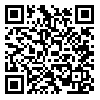Wed, Jul 16, 2025
[Archive]
Volume 8, Issue 3 (Aug 2023)
JNFS 2023, 8(3): 443-451 |
Back to browse issues page
Download citation:
BibTeX | RIS | EndNote | Medlars | ProCite | Reference Manager | RefWorks
Send citation to:



BibTeX | RIS | EndNote | Medlars | ProCite | Reference Manager | RefWorks
Send citation to:
Faraji R, Sadeghi M, Sadeghi R, Mardani G, Sedehi M, Shabani Borujeni F. Investigation of Phosalone Residues in the Early and Late Varieties of Peach Products of Orchards Saman City, Chaharmahal and Bakhtiari Province in 2019. JNFS 2023; 8 (3) :443-451
URL: http://jnfs.ssu.ac.ir/article-1-513-en.html
URL: http://jnfs.ssu.ac.ir/article-1-513-en.html
Reza Faraji 

 , Mehraban Sadeghi
, Mehraban Sadeghi 

 , Ramezan Sadeghi *
, Ramezan Sadeghi * 

 , Gashtasb Mardani
, Gashtasb Mardani 

 , Morteza Sedehi
, Morteza Sedehi 

 , Farshid Shabani Borujeni
, Farshid Shabani Borujeni 




 , Mehraban Sadeghi
, Mehraban Sadeghi 

 , Ramezan Sadeghi *
, Ramezan Sadeghi * 

 , Gashtasb Mardani
, Gashtasb Mardani 

 , Morteza Sedehi
, Morteza Sedehi 

 , Farshid Shabani Borujeni
, Farshid Shabani Borujeni 


Department of Environmental Health Engineering, School of Health, Shahrekord University of Medical Sciences, Shahrekord, Iran
Abstract: (1919 Views)
Background: Nowadays, increasing the use of pesticides to manage the agriculture production resulted in increased pesticide residues in final products and concerns about environmental pollution and prevalence of emerging diseases. This study aims to investigate the residual amount of Phosalone toxin in the early and late varieties of peach orchards in Saman city located in Chaharmahal and Bakhtiari province. Methods: In this study, 60 samples of early and late peach varieties of peach orchards were selected randomly. Phosalone residues in early and late peach varieties before and after washing, and after peeling were extracted by QUECHERS method and the amount of extracted toxin were measured by high-performance liquid chromatography (HPLC). The data were analyzed using SPSS v.24 software. Results: Phosalone residues in early peach varieties before and after washing were 3.55 ± 0.94 and 0.31 ± 0.29 mg/kg, respectively. The concentration of Phosalone residues in unwashed early and late peach varieties before washing was 3.17 ± 0.97 mg/kg but decreased to 0.64 ±0.74 mg /kg after washing. Peeling reduced 97.79% of the Phosalone residues in late peach. Early and late peaches covered by the plant pathology clinic and unwashed late peaches not covered by plant pathology clinic were significantly (P < 0.05) higher than the Iranian national standard (2 mg/kg). Conclusion: Washing and peeling the peach significantly decreased the toxin residues. In order to minimize the risk of exposure to Phosalone residues, integrated pest control management programs are essential.
Type of article: orginal article |
Subject:
public specific
Received: 2021/11/2 | Published: 2023/08/28 | ePublished: 2023/08/28
Received: 2021/11/2 | Published: 2023/08/28 | ePublished: 2023/08/28
| Rights and permissions | |
 |
This work is licensed under a Creative Commons Attribution-NonCommercial 4.0 International License. |




